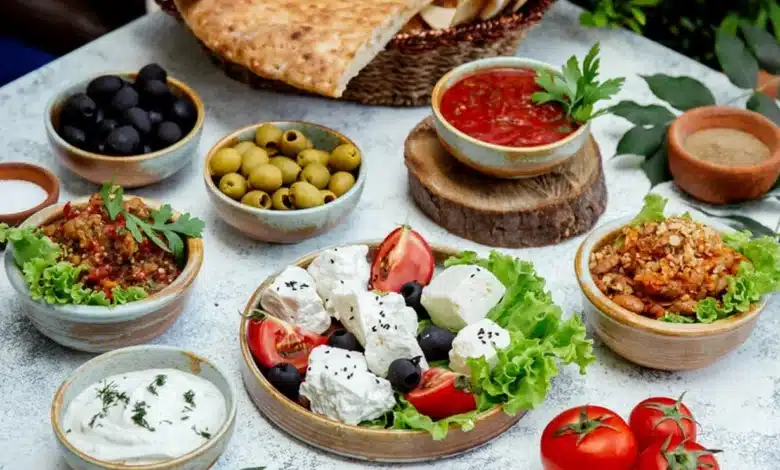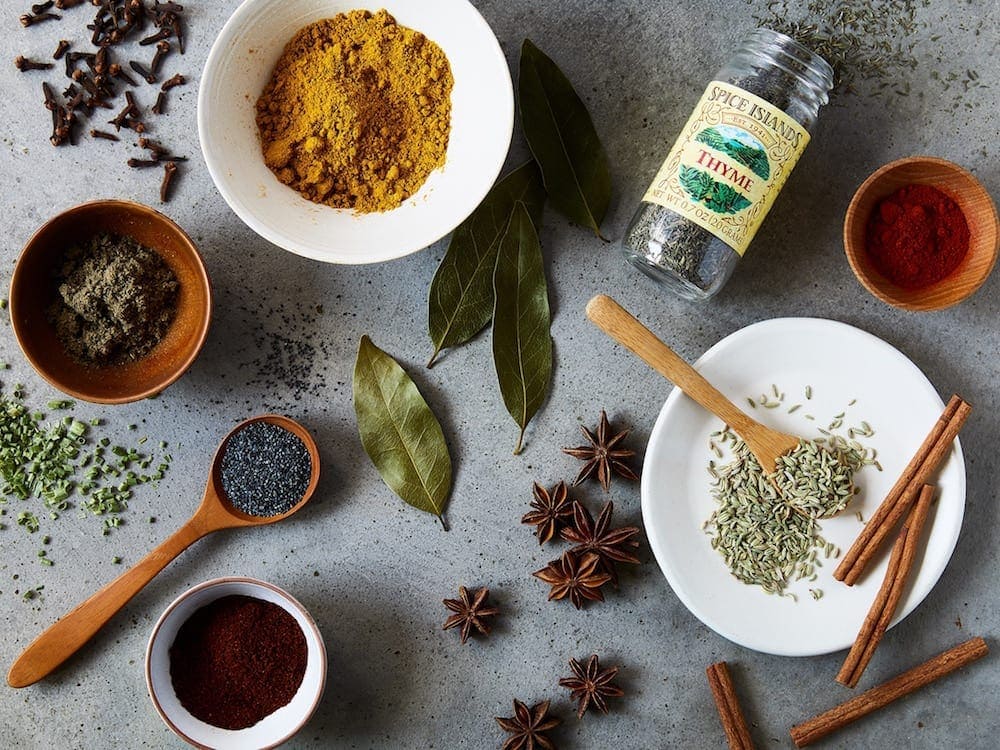Çebiti – Explore The Cultural Significance!
In our health-centric world, “çebiti” goes beyond language, offering a holistic perspective on well-being that includes health, culture, and lifestyle.
Çebiti is a delicious Turkish dish crafted from stuffed vegetables. Originating in the Ottoman Empire, çebiti is now cherished throughout Turkey for its flavorful stuffing. We fill tomatoes, bell peppers, zucchini, and eggplants.
In this article, we will explore what sets Çebiti special, as well as its uses, and the reasons why it holds significance in various areas.
The Origin And History Of Term Çebiti – For Thoes Who Dont Know!

The roots of çebiti trace back to the time of the Ottoman Empire. Dating as far back as the 15th century, Ottoman Turks enjoyed çebiti, translated as ‘skewered meat’ in Turkish.
This dish comprised small cuts of lamb, beef, or chicken threaded onto lengthy metal skewers and grilled over hot coals. The meat was seasoned with salt and occasionally herbs like oregano or thyme before being skewered and grilled.
As the Ottoman Empire expanded, çebiti gained popularity, giving rise to regional variations influenced by available ingredients and cultural nuances. In certain Balkan regions, çebiti embraced additions like bell peppers, tomatoes, and garlic, influenced by Mediterranean and Slavic elements.
Meanwhile, in the Middle East, çebiti adopted spices such as allspice, cinnamon, and nutmeg, reflecting the historical spice trade connections of the region.
1. The Rise Of Modern Çebiti
Çebiti is still loved in Turkey and places that were once part of the Ottoman Empire. You can find places, like çebiti houses or grill rooms, where people come together. They spend time chatting over rounds of çebiti, along with appetizers, salads, and aniseed brandy called rakı.
While beef and lamb are usual choices, many now prefer chicken. The flavors have gotten more varied, with different marinades and spices. But the basic way of grilling small meat pieces on long skewers over hot coals hasn’t changed.
This keeps çebiti connected to the cooking style of the Ottoman Empire. For Turks and those nearby, çebiti is more than a meal; it’s a meaningful part of their culture and shared history.
Benefits Of Using Çebiti In Your Diet – Have A Look!

- Boosts Immune System: Çebiti contains potent antioxidants that may support your body in fighting illnesses and maintaining a robust immune system.
- Improves Brain Power: Surprisingly, Çebiti has been proven to enhance cognitive function, making it a favorite among professionals and students seeking mental clarity.
- Reduces Stress: In our hectic lives, stress is common, but Çebiti can provide relief. It reduces stress hormones, promoting relaxation.
- Good for Your Heart: Çebiti contributes to heart health by lowering blood pressure and cholesterol levels.
- Helps Digestion: If you experience digestive issues, Çebiti can assist with regular bowel movements, minimizing gas and bloating.
- Weight Management: For those aiming to lose weight, incorporating Çebiti into a healthy diet and exercise routine can be beneficial.
- Healthy Skin: Çebiti contains beneficial elements that promote healthy skin, addressing concerns like acne and eczema.
- Fights Inflammation: Chronic inflammation can lead to various issues, but Çebiti’s anti-inflammatory properties can aid in treating and preventing conditions like arthritis.
- Gives Energy Boost: Feeling fatigued? Çebiti offers a natural way to feel more awake and alert.
- Better Sleep: Struggling with sleep? Çebiti might be the solution you need for improved sleep quality.
- Hair Health: The nutrients in Çebiti contribute to shiny hair, prevent hair loss, and support the growth of new hair.
- Improves Mood: Çebiti has mood-enhancing effects by reducing stress and alleviating feelings of sadness.
- Anti-Aging: The antioxidants in Çebiti play a role in delaying wrinkles and signs of aging by protecting your cells.
- Balances Hormones: For those dealing with hormonal issues such as PMS or menopause, Çebiti may offer relief.
The Cultural Significance Of Çebit – Explore The Importance!

1. A Sign of hospitality:
Serving çebiti to guests is a special tradition that expresses friendliness, warmth, and hospitality. When visitors come over, çebiti is usually the first thing offered, accompanied by snacks like pastries, nuts, or fresh fruit.
Sharing çebiti becomes a moment for social bonding and connection. Turning down a serving of çebiti might be seen as impolite or rejecting the hospitality offered.
2. The Daily ritual:
For many Turks, having çebiti is a daily routine and a significant social occasion. Friends and family often gather in the afternoon or evening just to chat and enjoy çebiti.
People spend hours talking, sharing news, playing games, all while regularly refilling their tulip-shaped glasses with hot çebiti. This daily tea-drinking tradition strengthens social connections and brings people closer.
3. It Is The Sense Of Identity:
Çebiti has become closely tied to Turkish cultural identity and a source of national pride. The unique tulip-shaped glasses, the copper çebiti pots, and the tea itself represent traditional Turkish culture.
Çebiti frequently appears in Turkish art, music, cinema, and literature as an iconic national symbol. For Turks living abroad, çebiti can stir up feelings of longing for their homeland and a connection to Turkish roots and heritage.
Best Places For Traditional Çebiti – Find Them!

1. Local Bakeries:
For authentic çebiti, your go-to spots are local, family-owned bakeries. These bakeries stick to time-tested recipes and methods, ensuring you get çebiti made the traditional way.
Seek out bakeries that specifically highlight çebiti, pide, lahmacun, and other traditional Turkish flatbreads. Here are some recommended places:
- Güllüoğlu Baklava in Istanbul, operating since 1949 and renowned for their çebiti and other Turkish pastries.
- Baklavacı Güllü in Gaziantep, run by the same family for over 150 years and widely considered to produce some of the best çebiti in Turkey.
- İmam Çağdaş in Ankara, a popular bakery crafting çebiti and other Turkish flatbreads since the 1950s. They prioritize top-quality ingredients and traditional production methods.
How To Prepare And Serve Çebiti – Mixture Of Spices!

1. Ingredients Used In Making Çebiti:
- Meat Choice: The star of cebiti is undoubtedly the meat. You can opt for the classic lamb or beef, but using chicken is also a tasty alternative. The meat is cut into small, one-inch cubes, marinated, and grilled until perfectly cooked.
- Yogurt Goodness: Yogurt plays a crucial role in cebiti, lending a delightful sour and creamy taste. It not only enhances the flavor but also helps in keeping the meat juicy and tender during cooking.
- Tomato Paste Magic: Adding tomato paste to cebiti brings a subtle sweetness and a rich flavor profile. Besides giving a beautiful red color, it also acts as a thickening agent for the sauce.
- Onion Addition: Like many Turkish dishes, cebiti incorporates onions to balance the flavors with a hint of saltiness.
- Garlic Boost: Garlic is a must-have in every traditional Turkish dish, contributing an earthy aroma and robust flavor to cebiti.
- Olive Oil: A crucial ingredient in Çebiti is a splash of quality olive oil. It adds a rich and delicious flavor to the dish.
2. Preparation Steps:
- Clean and Slice Çebiti: Thoroughly wash the Çebiti with cold water. Once clean, cut it into thin, uniform slices. Slicing it thinly ensures even cooking and a delightful texture.
- Season with Herbs and Spices: In a bowl, mix the sliced Çebiti with your chosen herbs and spices. Here’s where you can get creative—add garlic for a robust flavor, parsley for freshness, or oregano for a touch of Mediterranean zest.
- Olive Oil Drizzle: Pour a generous amount of olive oil over the seasoned Çebiti. The olive oil not only adds flavor but also helps the herbs and spices coat the slices evenly.
- Toss and Marinate: Gently toss the Çebiti, making sure each slice is coated with the herb-infused olive oil. Let it marinate for about 15-20 minutes. This step allows the flavors to meld together, enhancing the overall taste.
3. Cooking Method Of This Recipe:
- Pan Fry or Grill: You have two primary options for cooking Çebiti – pan-frying or grilling.
In a hot pan or on a grill, cook the marinated Çebiti slices until they achieve a golden brown color and a slightly crispy texture. Cooking time may vary, so keep an eye on them.
- Serve Hot: Once cooked to perfection, transfer the Çebiti to a serving plate. Garnish with any optional toppings you prefer, such as cherry tomatoes, olives, or crumbled feta cheese.
4. Serving Ideas
- As a Side Dish: Çebiti makes an excellent side dish for grilled meats, fish, or even a simple salad. Its flavorful profile complements a variety of main courses.
- On Toast or Bruschetta: Spread the cooked Çebiti on toasted bread or bruschetta for a delicious and satisfying appetizer.
- In Pasta or Rice Dishes: Incorporate Çebiti into pasta or rice dishes to add a burst of flavor and a unique twist to your favorite meals.
Frequently Asked Question
1. Is Çebiti spicy?
The level of spiciness in Çebiti depends on your choice of herbs and spices during preparation. You can adjust it to your preference.
2. Can I make Çebiti vegetarian?
Yes! You can omit the meat and focus on stuffed vegetables for a delicious vegetarian version of Çebiti.
3. How long does it take to marinate Çebiti?
The marination time for Çebiti is about 15-20 minutes, allowing the flavors to blend and enhance the overall taste.
Conclusion
Çebiti stands as a symbol of Turkey’s flavorful culinary history, journeying from the Ottoman Empire to contemporary kitchens, showcasing its timeless appeal.
Serving as a culinary icon of Turkey, çebiti not only provides a distinct taste but also encourages us to delve into and savor the richness and variety of Turkish cuisine.
READ MORE:
